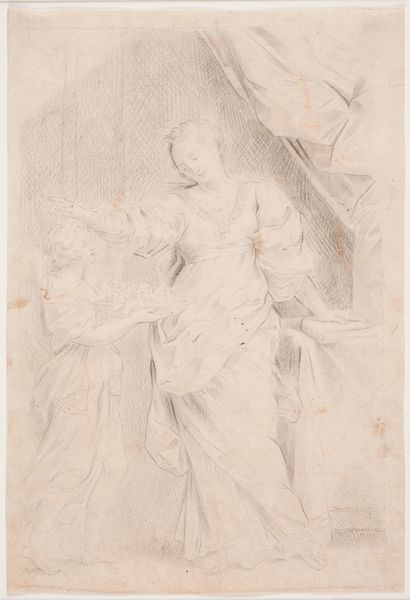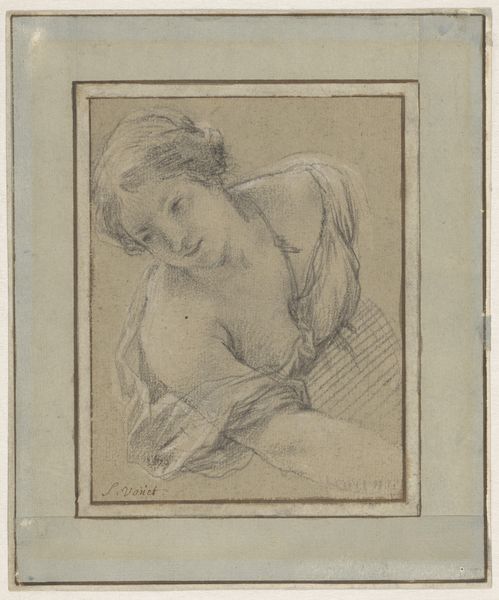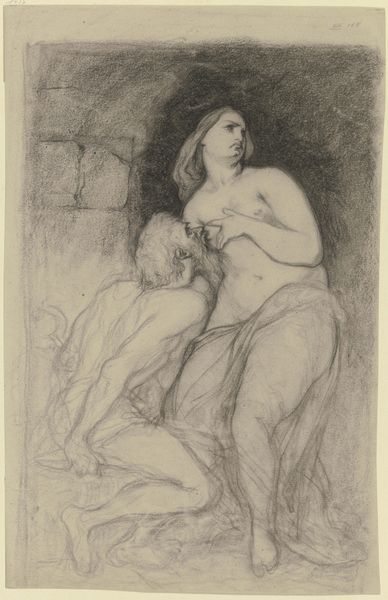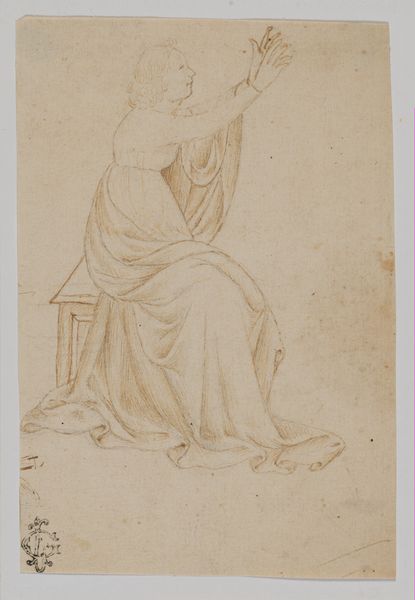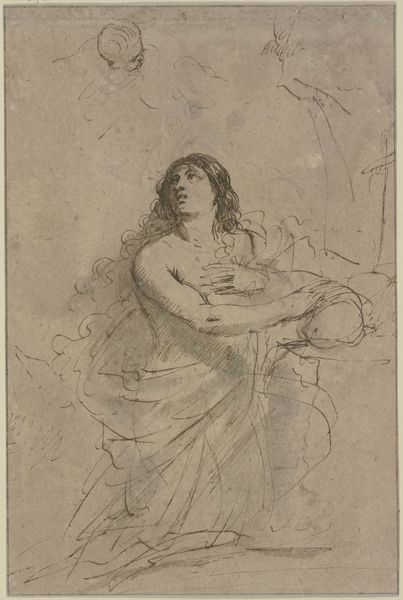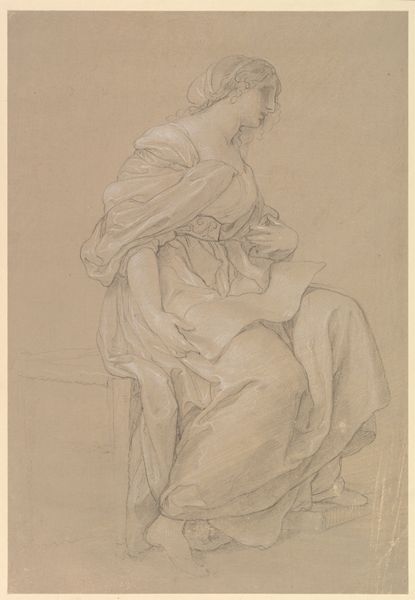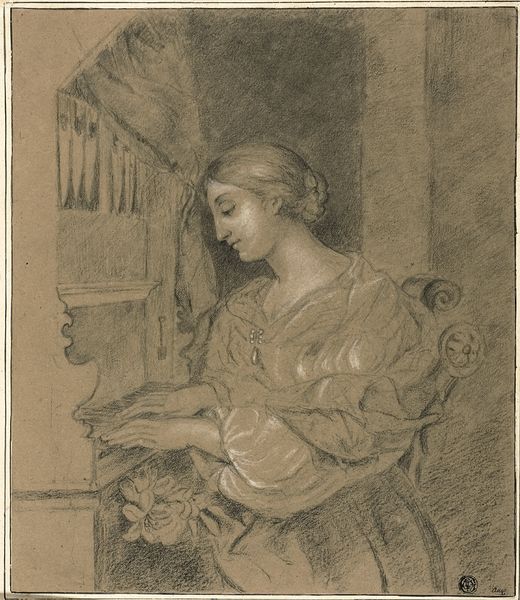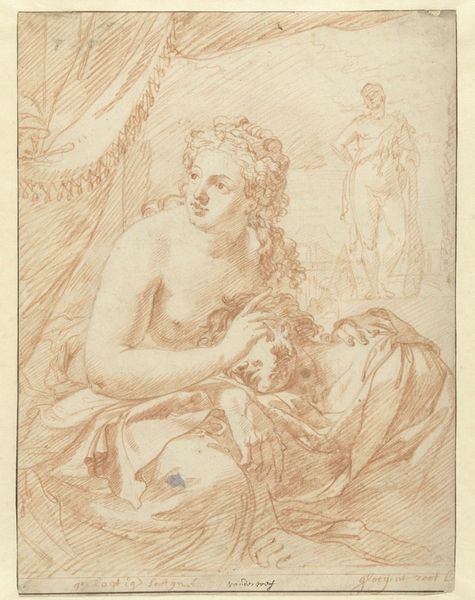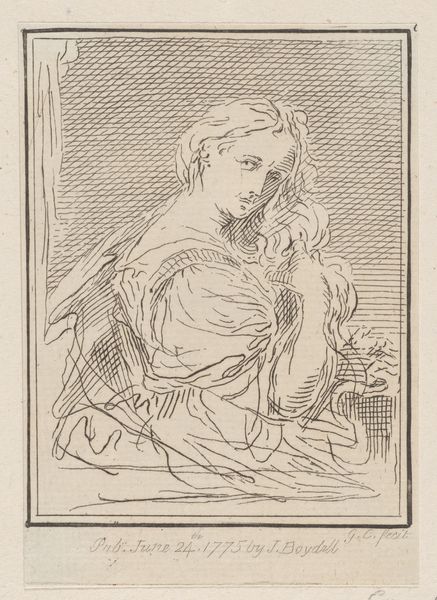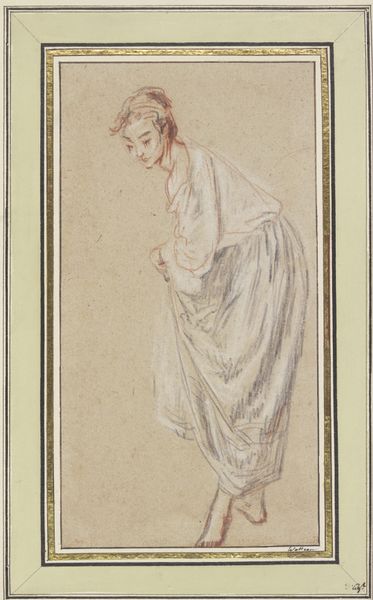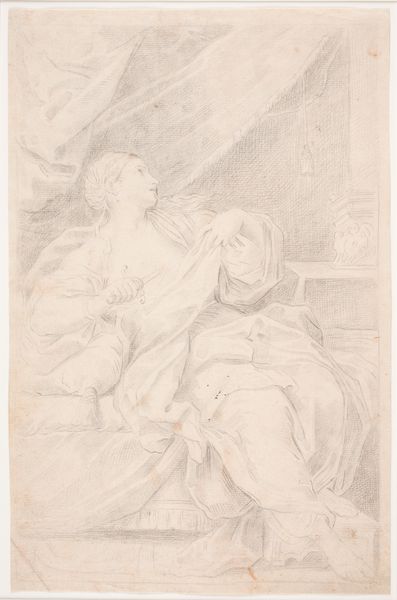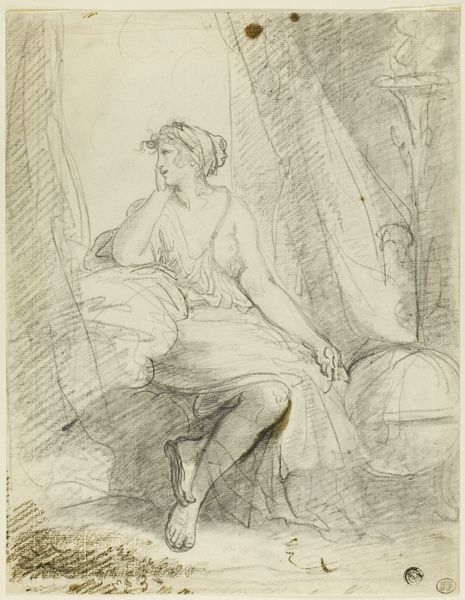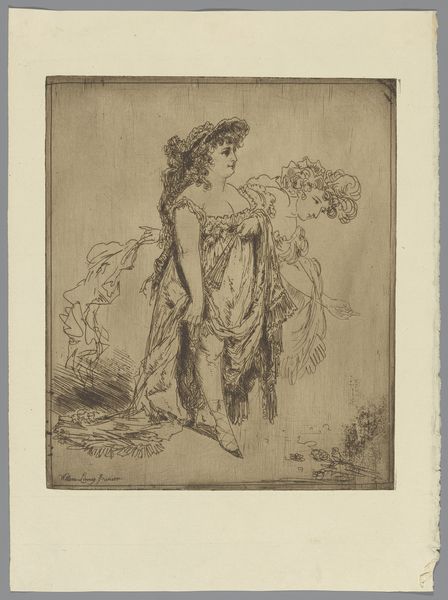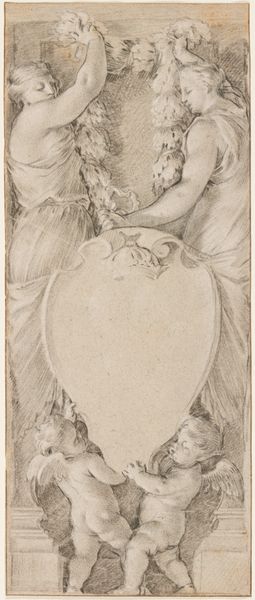
drawing, pencil
#
portrait
#
drawing
#
neoclacissism
#
pencil sketch
#
charcoal drawing
#
pencil drawing
#
pencil
#
portrait drawing
#
academic-art
#
nude
Dimensions: 10 5/16 x 7 1/4 in. (26.2 x 18.4 cm) (image)19 3/4 × 15 3/4 in. (50.17 × 40.01 cm) (outer frame)
Copyright: Public Domain
Louis Lafitte rendered this drawing of a woman in classical dress using graphite on paper. Observe the gesture of the figure’s hand resting gently upon her chest. This simple yet profound motif echoes through art history, resonating with themes of vulnerability and introspection. The hand-on-chest gesture appears in depictions of the Virgin Mary, symbolizing grief and piety. Even in secular contexts, like this drawing, it retains a subtle charge. Consider how the pose evokes a sense of quiet contemplation, inviting viewers to reflect on their own emotional depths. Lafitte's use of this ancient symbol bridges classical ideals with the burgeoning Romantic era, revealing a timeless exploration of the human condition. This is the enduring power of symbols, constantly transformed yet eternally resonant, weaving a complex web across cultures and eras.
Comments
minneapolisinstituteofart almost 2 years ago
⋮
In France in the 1790s, the Republicans used more than the guillotine to do away with the ancien régime. They went so far as to invent a new system of measures (the metric system), a new dress code, a new system of time (100-second minutes, 100-minute hours, 10-hour days), and a new calendar. Rejecting the Gregorian calendar inherited from the Roman Catholic Church, which structured the very fabric of life around religious observances and feast days, the Republicans decided to mark the days in a more rational, secular way. Their new calendar maintained the twelve-month year but introduced three-week months and ten-day weeks (décades). The extended week was the least popular measure, and not just with the church. A day of rest every seven days, not ten, was sacred to the working class, too. This study belongs to a series of designs by Louis Lafitte for a printed calendar in which he invented a new iconography for the months. The noble bathing woman represents Thermidor, France’s hottest month (late July to late August). Napoleon would abolish the unpopular Republican calendar in 1806, just a year or two after Lafitte produced this drawing.
Join the conversation
Join millions of artists and users on Artera today and experience the ultimate creative platform.
